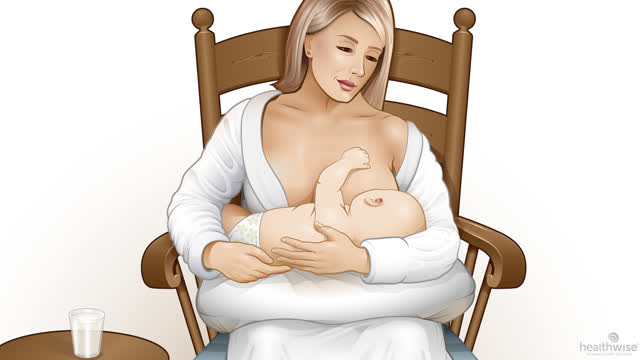Breastfeeding as Birth Control
Topic Overview
Breastfeeding can be used as a method of birth control, called the lactational amenorrhea method (LAM). But three conditions must be met to ensure its effectiveness:
- Your baby must be 6 months of age or younger. After your baby is 6 months old, you are much more likely to become pregnant and need to use another method of birth control to prevent pregnancy.
- You must fully breastfeed your infant, meaning that the baby receives only breast milk. Also, breastfeeding must be maintained with both day and night feeding, and no long intervals can occur between feedings. It’s best if you don’t go longer than 4 hours between feedings during the day and no more than 6 hours between feedings at night.
- You must not have a period (amenorrhea). When your periods start, use an additional birth control method.
After 6 months, even if you are breastfeeding exclusively and your period has not returned, you must use an additional form of birth control if you do not want to get pregnant. You can get pregnant before your first period. This is because you ovulate, then have your period.
At any point during breastfeeding, use a reliable method of birth control if you do not want to get pregnant. Many methods are safe to use while you are breastfeeding, although some are more reliable than others. Options include:
- Birth control pills, skin patches, and rings. But it’s best to use progestin-only options in the first few weeks after giving birth.
- The shot, such as Depo-Provera.
- The hormonal implant, such as Nexplanon, which provides extremely effective birth control for 3 years.
- Barrier methods, such as condoms or diaphragms. To increase their reliability, use them with spermicide or foam.
- An intrauterine device (IUD), which is placed inside your uterus by a health professional.
Fertility awareness is not recommended for birth control during breastfeeding. This method is less reliable and harder to manage than other forms of birth control, especially since ovulation may not be regular while you are breastfeeding.
For more information, see the topic Birth Control.
Credits
Current as ofMay 29, 2019
Author: Healthwise Staff
Medical Review: Sarah Marshall MD – Family Medicine
Adam Husney MD – Family Medicine
Kathleen Romito MD – Family Medicine
Femi Olatunbosun MB, FRCSC – Obstetrics and Gynecology
Current as of: May 29, 2019
Author: Healthwise Staff
Medical Review:Sarah Marshall MD – Family Medicine & Adam Husney MD – Family Medicine & Kathleen Romito MD – Family Medicine & Femi Olatunbosun MB, FRCSC – Obstetrics and Gynecology






